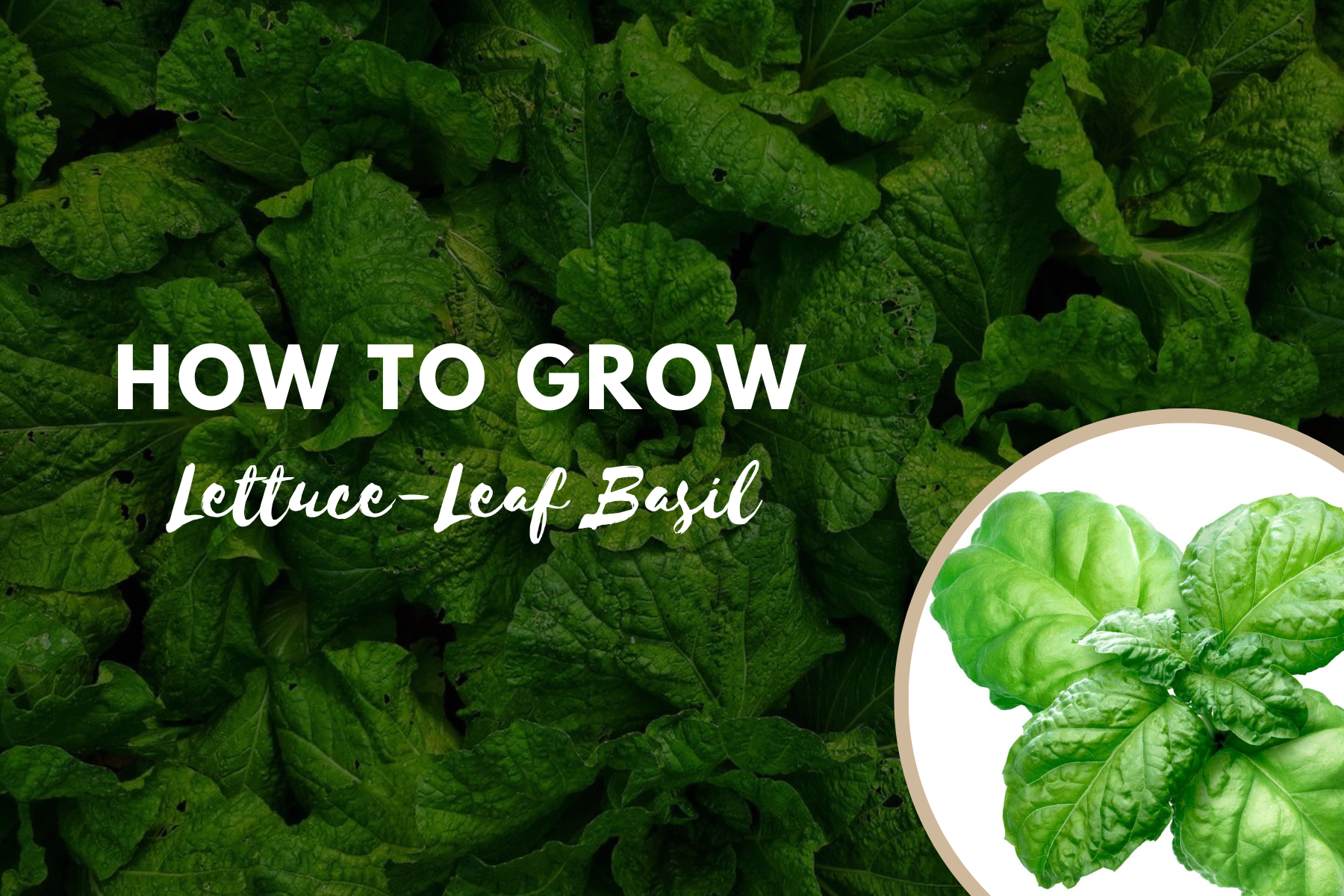Last Updated on April 15, 2024 by Real Men Sow
Lettuce-leaf basil is a great option for those who love basil but cannot seem to grow enough. This is the Japanese basil variety, which is known for its large leaves. Although this basil doesn’t have the same flavour as Genovese, it has a sweet basil flavour.
What is lettuce-leaf basil?
Lettuce Leaf basil, as the name suggests, is a variety that has extraordinarily large leaves. It can grow up to 5 inches (12.5 cm). long. The leaves are bright green and crinkled, and they look a lot like lettuce leaves. This is why they are so common. The leaves are placed closely on plants with a height of 18-24 inches (45.5-61.1 cm). in height. Although it has a milder basil aroma and flavour, the extra-large leaves more than makeup for this.
The Basil variety “Lettuce Leaf” is a prolific grower of leaves. Keep the leaves coming by pinching off the blooms. You can use the flowers in salads or as garnish. Lettuce leaf is slower to bolt than other varieties of basil. This gives growers a longer harvest period.
Lettuce Leaf basil, like other aromatic herbs, repels insects and eliminates the need for pesticides. It can be planted near insect-prone areas and in the annual or cutting gardens. Lettuce Leaf basil’s huge basil leaves are great for making pesto, fresh wraps, lasagna layers, and stuffing.
Growing Lettuce–Leaf Basil
Lettuce Leaf, like all basil, loves heat and requires moist, rich soil. Basil should be grown in full sun for at least 6-8 hours each day. Plant seeds indoors 6-8 weeks before transplanting. Transplant indoor seedlings 8-12 inches (20.5-30.5 cm.) Thin seedlings grown in the garden directly to 8-12 inches (25cm-35cm) apart. apart.
The soil should be kept moist, but not soggy. To encourage additional growth, harvest the leaves and pinch off any blossoms.
Planting
For lettuce leaf basil indoors, sow the seeds 1/4 inch deep and at least 10 inches apart in flats. Germination is best in a warm environment, 75 degrees Fahrenheit. If you are planting outside, make sure to choose a sunny spot and wait until frost danger passes before sowing the basil. These delicate, cold-sensitive plants will die if they are frozen.
Regardless of whether you sow indoors or outdoors, germination should take approximately two weeks.
Maintenance
When the leaves are harvested, fertilize lettuce leaf basil plants twice to three times per week. Avoid heavy nitrogen fertilizers as they can alter oil content and taste. The plants should be watered lightly, especially during dry spells. However, it is important to keep the leaves hydrated to prevent fungal diseases.
To encourage bushiness and yield, pinch back the plants when there are four sets of leaves. Keep the seeds in the packet and sow them again every three to four weeks.
Pest Management
Basil is susceptible to plant pathogens, including the soil-borne fungi Fusarium Wilt and Pythium Blight. Both can quickly kill young plants. Botrytis cinerea, a gray mould that can infect leaves and cause death, may be present even after harvesting.
Preventing these diseases is the best way to get rid of them. Use only well-drained soil and eliminate any plants that become infected. Common pests include Japanese beetles, mites, and aphids. You can either spray them with a garden hose or manually remove them.


